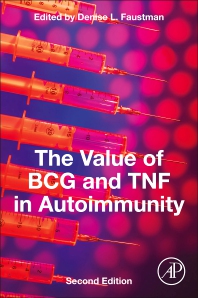Books in Clinical immunology
Books in Clinical immunology

Mucosal Vaccines
- 1st Edition
- David W. Pascual
- English

Mosaic of Autoimmunity
- 1st Edition
- Carlo Perricone + 1 more
- English

The Value of BCG and TNF in Autoimmunity
- 2nd Edition
- Denise Faustman
- English

Translational Immunology
- 1st Edition
- Seng-Lai Tan
- English

Blood Transfusion
- 1st Edition
- H. F. Brewer + 2 more
- Geoffrey Keynes
- English

Autophagy: Cancer, Other Pathologies, Inflammation, Immunity, Infection, and Aging
- 1st Edition
- M. A. Hayat
- English

Models of Protection Against HIV/SIV
- 1st Edition
- Gianfranco Pancino + 2 more
- English

The Decade of Autoimmunity
- 1st Edition
- Yehuda Shoenfeld
- English

Autoimmune Disease Models
- 1st Edition
- Irun R. Cohen + 1 more
- English